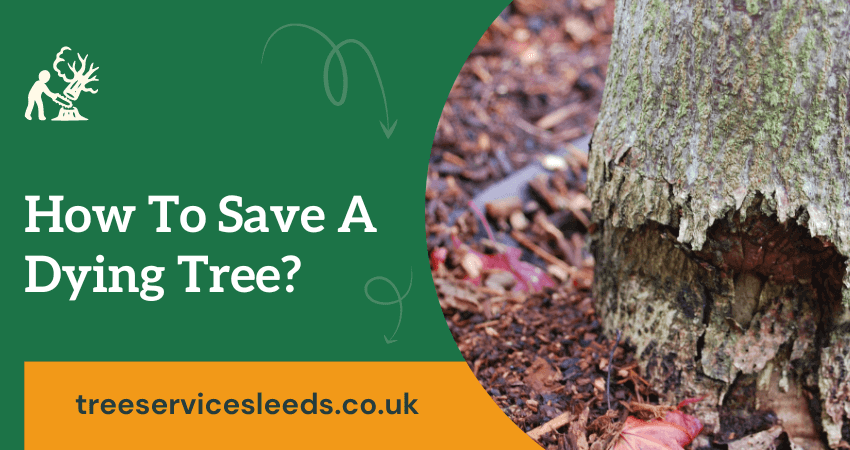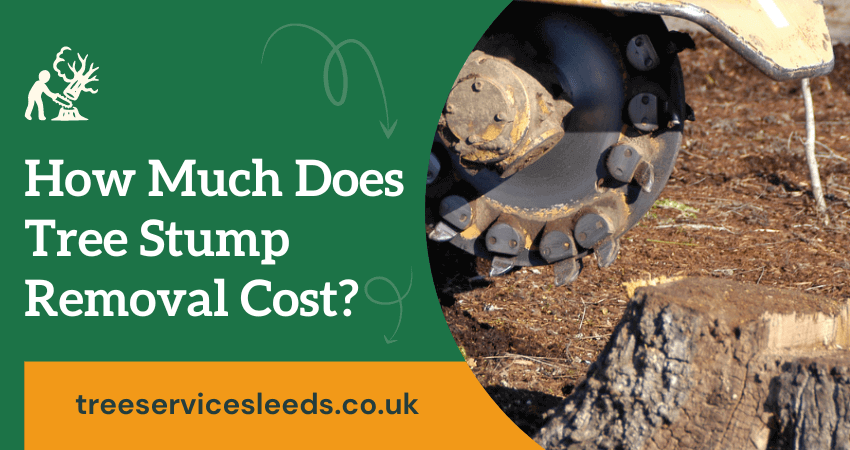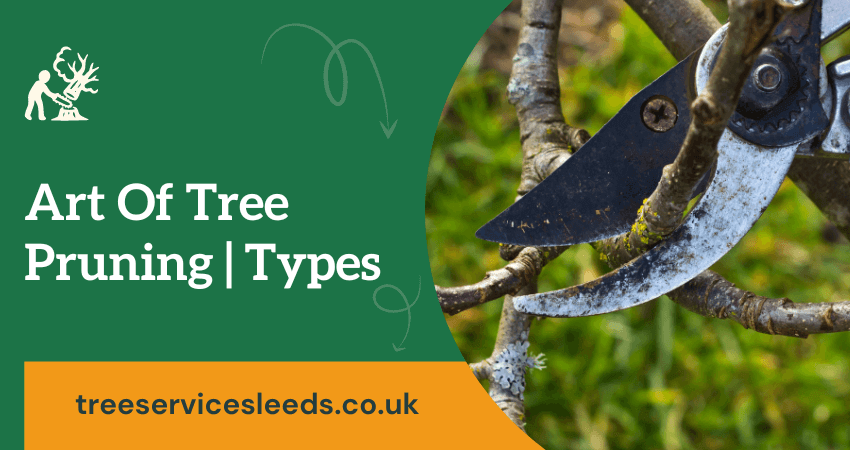Trees play a vital role in our ecosystem and losing one can have a significant impact. However, sometimes trees become sick or stressed, leading to their decline. If you suspect that a tree in your yard is dying, there are several steps you can take to try and save it.
In this guide, we will discuss some effective ways to save a dying tree and outline steps to diagnose the cause of the problem. So read on to learn more about how to save a dying tree.
Determine Causes Of Tree’s Decline
Various factors can lead to the decline of a tree, such as
1) Diseases or pests
Diseases such as root rot, canker diseases and wood-boring insects can cause a tree to decline. Inspecting the tree’s trunk and branches for signs of fungi or insect damage can help you determine if this is the issue.
2) Poor nutrition
If your soil doesn’t have enough nutrients, your tree may not be getting the nutrition it needs. Tests can be done to determine the nutrient levels of your soil and see if your tree is suffering from a lack of nutrients.
3) Environmental stress
Extremes in weather, such as drought or heavy winds, can cause a tree to decline. Additionally, trees planted in low-lying areas are more prone to flooding, which can also lead to a decline.
4) Natural aging
Eventually, all trees will age and decline. If your tree is an older specimen, it may be time to replace it with a new one.
5) Soil compaction
If your soil is compacted, it can prevent the tree’s roots from getting the oxygen and nutrients they need to survive. To help prevent compaction, make sure to keep heavy machinery away from the tree’s root zone.
6) Improper care
Improper pruning, mulching or watering can lead to a decline in the health of a tree. Make sure that you are properly caring for your trees and take steps to improve any areas where you may be making mistakes.
Identifying the cause of your tree’s decline is essential so that you can take the appropriate steps to address it. Taking the time to properly care for your trees can help ensure that they stay healthy and vibrant for years to come.
Action Steps For Saving Dying Tree
Many steps can be taken to help save a dying tree.
- Watering the tree: Providing the tree with ample water is essential for its survival. To do this, water deeply once or twice a week during dry spells and monitor the soil’s moisture level frequently.
- Pruning dead or diseased branches: Remove any dead or diseased branches of the tree to save energy and promote healthy growth.
- Mulching: Mulch around the base of the tree to keep moisture in, regulate soil temperature and reduce weed competition.
- Fertilizing the Soil: Fertilize the tree with a balanced fertilizer to provide extra nutrients.
- Protecting the root system: Protect the root system by creating a protective barrier around it, such as using a tree wrap or plastic sheeting. This will help keep out pests and diseases that can harm the tree’s health.
- Protecting the trunk from mowers and trimmers: Use a tree guard around the trunk of the tree to prevent damage from lawnmowers and trimmers.
- Identifying and treating pests or diseases: Identify any pests or diseases that may be affecting the tree and take measures to treat them. This may include using insecticides, fungicides or other treatments to help the tree recover.
- Providing Support for Weak Trees: Provide support for weak trees, such as staking or bracing the tree, to help stabilize it and prevent further damage.
Taking these steps can help save a dying tree and restore its health. However, if you are unable to do so on your own, it is recommended that you consult an arborist for professional advice.
When to Call a Tree Professional?
If you suspect that your tree is in serious trouble, it is best to contact a Leeds tree surgeon for professional advice. An arborist can identify any issues with your tree and recommend the appropriate steps to take. They can also provide the necessary care and treatments needed to help restore the tree’s health.
It is important to remember that not all trees can be saved. In some cases, it may be best to remove the tree and replace it with a healthier one.
How can I determine if a tree is dead or just dormant?
One way to tell if a tree is dead or simply dormant is by examining its bark. If the bark looks dry and cracked, then it is likely that the tree has died. Dead trees usually have no leaves, whereas living trees generally retain at least some of their foliage. You can also check for signs of insect damage or decay, which may indicate that the tree is dead or dying.
Additionally, you can check for signs of life such as branches that are still flexible and not completely brittle. If a tree is healthy and thriving, then it will have green and vibrant foliage instead of leaves that are dry, brown and withered. Lastly, if a tree appears to be actively growing, then it is likely alive and healthy. By examining all of these factors, you can determine whether a tree is dead or just dormant.
It is important to note that trees enter dormancy during the winter months in colder climates. Even if a tree appears to be lifeless during this time, it may still be alive and will become more active during the warmer months. When in doubt, contact your local arborist for a professional diagnosis.
FAQs – Save Dying Tree
What are some ways to revive a tree that is suffering from drought?
Some ways to revive a tree that is suffering from drought include
- Deep watering of the roots of the tree using a slow and steady stream of water.
- Apply a layer of mulch around the tree’s roots.
- Installing a drip irrigation system for long-term watering needs and providing additional nutrients through fertilizers.
- Using a tree canopy or shade cloth to help protect the tree from extreme sun and heat.
- Applying beneficial fungi to increase the absorption of water and nutrients in the soil.
- Ensuring the soil pH is balanced by adding lime, sulfur or other compounds as needed.
What should I do if my tree has been infested by pests?
If you suspect that your tree has been infested by pests, the first thing to do is to identify the type of pest. Once you have identified the pest, it’s important to take steps to control them before they cause lasting damage. This may include removing dead foliage, as well as using insecticides or natural pest control methods.
In some cases, it may be necessary to call a professional for assistance in treating the infestation. Properly caring for your tree can help prevent further pest invasions and ensure that your trees continue to thrive.
Can a tree be saved if it has been damaged by construction or heavy equipment?
Yes, a tree can be saved if it has been damaged by construction or heavy equipment. To do so, the damage must be assessed and treated as soon as possible. This may include sealing wounds with wound paint, providing supplemental water and nutrients or even transplanting the tree if necessary.
What is the best time of year to treat a dying tree?
The best time of year to treat a dying tree depends on the type of tree, its environment and the severity of the problem. Generally, late winter or early spring are optimal times to assess any problems with trees as they emerge from dormancy and begin new growth.
If the tree is suffering from disease, insect infestation or other problems, it is best to treat those issues when they are most active, which is typical during the warmer months of late spring and summer.
How can I properly water a tree to revive it?
Watering a tree properly can help keep it healthy and revive it if necessary. The amount of water needed to revive a tree depends on the species, size and soil type. In general, however, all trees need at least an inch (2.5 cm) of water per week. This should be applied evenly over the entire root zone of the tree.
For large trees, soaking the soil to a depth of 10–12 inches (25–30 cm) is ideal. This may require up to 15 gallons (56 liters) of water per week for each tree.
Wrap Over
While saving a dying tree may seem like an impossible task, it is possible to bring them back to health with some careful planning and care. First, assess the situation and see what could be causing the decline. Once the cause has been identified, corrective measures can be taken. A tree may need to be monitored for a few months to make sure it is recovering from its decline.
Additionally, providing extra care such as watering and fertilizing can help give it a fighting chance. With careful attention and planning, it is possible to revive a dying tree and keep it healthy for years to come.
Be sure to consult with a certified arborist or tree expert before taking any drastic measures and remember even a dying tree can provide beauty and shade for years to come. Thanks for reading!




